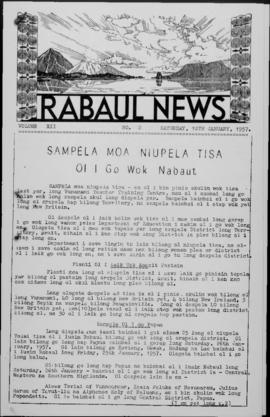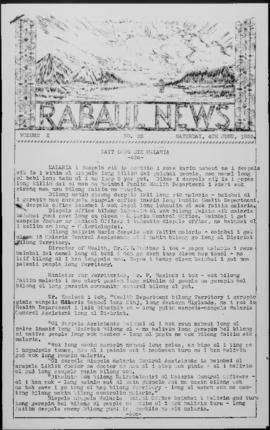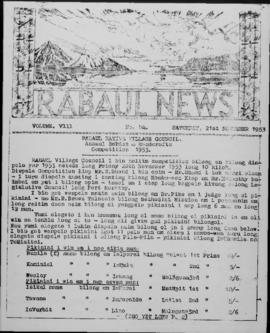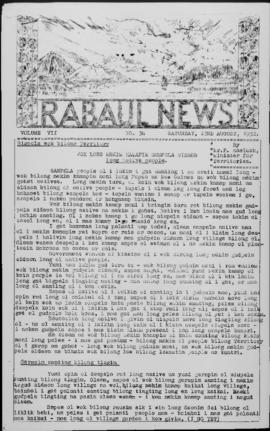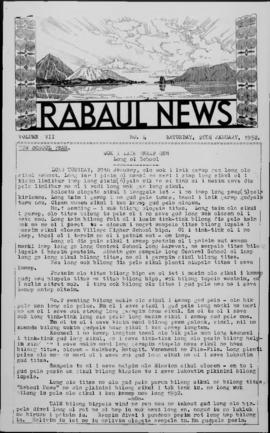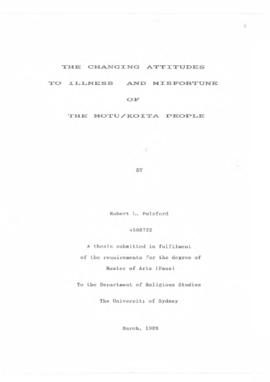This thesis was submitted at the University of Sydney and was awarded the degree of Master of Arts (Pass) in Religious Studies. This study, conducted by Robert Leonard Pulsford, provides details and analysis of the Motu Koita traditional belief systems to general health and sickness. The study details the attitudes and their effects on introduced Christian faith and Western medicine. The cross-cultural health and religious situations witnessed by village-based community workers, including professionally trained doctors, nurses and welfare officers, provides insights into health practices. The author’s vast experience of working in the field of Papua New Guinea’s public health system provides a greater sensitivity to the sacred folklores and myths of the Motu Koita people by surveying the social, geographic and economic aspects as well as describing the ceremonial rituals of pre contact times. The study offers a comparison of the role of village diviners, magicians and the like over Western medicine.
The thesis includes nine pictorial images or illustrations which add valuable dimension to the religious and social interactions of the Motu Koita people, in particular Pari Hanua or village people. These images are described as:
- A black and white photograph of old Pari village of traditionally thatched roofed houses. Photo taken about 1926 and a hand drawn map of Pari village done in February 1965.
- Black and white photograph of the Kidukidu stones with two Pari men squatting between them and a poster drawing based on the legend showing a woman (Ugava Vaina) suckling a Kidu Kidu (tuna fish).
- Four photographs demonstrating the Pari village ceremonial Tuna (Kidukidu) fishing carried out on the 8th August 1986.
- Copy of an old photograph of Hanuabada Women’s Cricket team taken before 1940.
- Hanuabada woman in traditional (Sene) dancing costume of necklaces of dog’s teeth and seeds, betel nut and headdress of feathers.
- Hanuabada man Revo Pita in Motu traditional (Sene) costume of the pectoral ornament of pig’s tusks, necklace of coral, headband and feathers.
- Pari village women and men celebrating Easter by singing and dancing to the Prophet (Peroveta) song rhythms dressed in modern floral outfits.
- Pari village elder, Airi Airi dressed in floral outfit dancing to the Peroveta rhythms.
- Pari village women with dishes of cooked food on their heads proceeding with much singing to the communal table for sharing with everyone at the Easter celebrations on 13th April 1968.
- Burial of the Pari village elder of Airi Airi Rahobada on the 9th October 1969. Rev Puka Oala reading from the Bible in Motu conducting the burial service.
